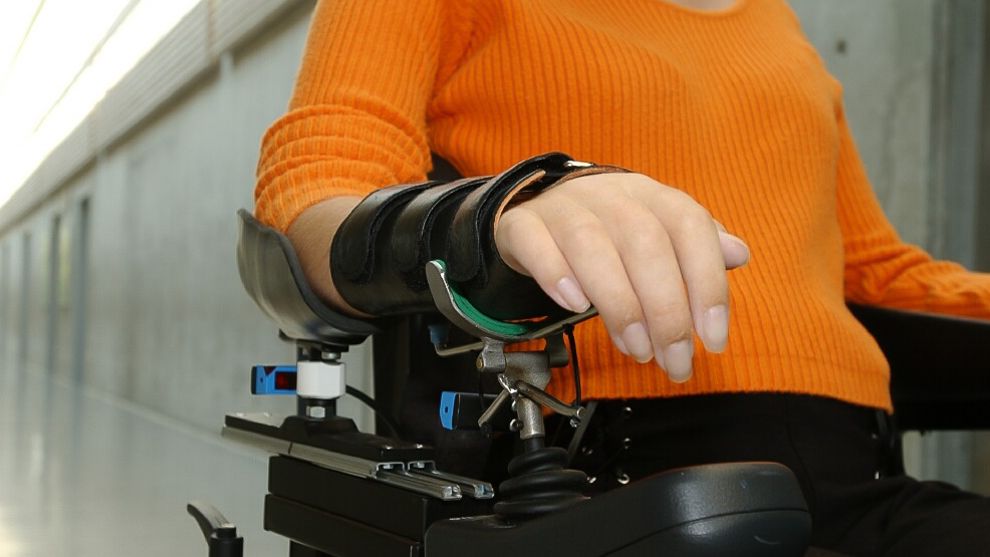General Introduction

This case study aims to illustrate the role of hope in the rehabilitation of Helen, a person living with the debilitating Guillain-Barré Syndrome (GBS) – how her hopes, both realistic and less realistic, were funnelled, adapted and integrated for effective rehabilitation management. See box 1 for more information on GBS. This case study offers a positive example of an intervention that built upon a person’s realistic hopes as well as dealt with less realistic hopes in a constructive way.
""Hope...provides comfort while enduring life threats and challenges""
Hope is a feeling that is characterized in simple terms by an anticipation of something good or something better will happen or of relief from something uncomfortable or bad. Hope is a multidimensional construct that provides comfort while enduring life threats and challenges. In general, it is positive and future-oriented and has an impact on a chronically ill person's attitude towards life and functioning. Hope can promote goal-directed activity particularly when focused on realistic expectations, carry persons through diverse struggles, and lead to personal growth as a motivational factor promoting positive outcomes. A person’s willpower can provide the person with the required energy and strength in the "hoping process".123
Qualitatively, hope can be distinguished as “generalised hope” or as “particularised hope”. While “generalised hope” is intrinsic to a person and may serve as a positive coping strategy, “particularised hope” refers to hoping with a specific expectation or goal.3
Lastly, persons perceive hope in different ways, reflecting the different sources from which the person draws hope. People experience hope even in negative situations or hope for things that are important to them but have a low likelihood of being realised.234
Box 1 | Guillain-Barré Syndrome – A Complex Disease and Its long Road to Recovery
Guillain-Barré Syndrome (GBS) is an acute inflammatory disorder of the peripheral nervous system. It is a common cause of rapidly acquired paralysis. It is brought about by a person’s own immune response to foreign antigens that is misdirected to a person’s peripheral nerve cells, where the cells are stripped of their myelin sheathes that are critical to nerve functioning. This type of disease is sometimes referred to as an autoimmune disease and is often (though not always) triggered by a viral or bacterial infection.567 From a medical perspective, the process of GBS is divided into three phases:5
- Initial phase (lasting up to 4 weeks): from the start of symptoms until there is no further decline of symptoms
- Plateau phase (lasting a few days to weeks): there is a stabilization of physical status
- Recovery phase (lasting a few weeks up to 2 years or longer): a gradual decrease of symptoms
The initial symptoms include pain, numbness, varying degrees of weakness in the legs, which can then spread to the upper torso and arms and increase in intensity until the muscles can no longer be used, sometimes leaving a person almost completely paralysed.578
Although the prognosis for GBS is usually favourable, it is a serious condition that can result in permanent severe disability in 20% and in mortality in about 10% of the cases. Given this, all cases of GBS can be a serious threat to life. In cases where the lungs are paralysed, GBS may result in death and artificial ventilation is required. Other associated symptoms may include loss of sensitivity, bladder and bowel disturbances, weakness of voice, respiratory function, ingestion and visual function (due to affected muscles), pain and fatigue. However, it should be noted that even in the most severe cases of GBS, recovery is possible, albeit to varying degrees.589
Integrating Hope Into Rehabilitation Management for GBS
Given the uncertainty surrounding the progression of GBS10, rehabilitation management should be based on a dynamic process that can be adapted according to a person's situation. Both the person and rehabilitation team are constantly searching for new possibilities to deal with the consequences of the illness. Hope is an inspiring and a stimulating factor in the process of recovery, and works against the person's inclination to "give up". Hope also motivates the person to persevere with rehabilitation. This may, in turn, lead to improvement in functioning.211
Thus there is a reinforcing feedback cycle – hope and the process of hoping can drive rehabilitation. This, in turn, can lead to improvement in functioning, which then can result in even more hope. The rehabilitation team should therefore work to integrate a patient's hopes into the rehabilitation approach, promoting those that are realistic and minimising those that are not.2